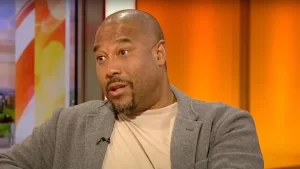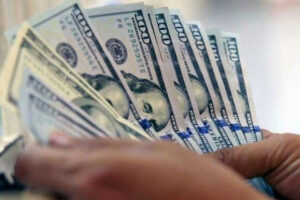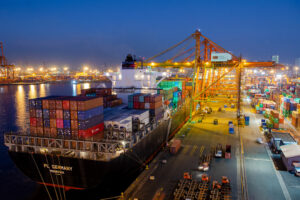By Justine Irish D. Tabile, Reporter
A US TARIFF of 19% on Philippine goods will likely undermine the competitiveness of local exporters compared with those in neighboring Southeast Asian countries, analysts said.
Foreign Buyers Association of the Philippines (FOBAP) President Robert M. Young said that with the 19% tariff, it will be a “hard climb” for Philippine exports to remain competitive in the US market.
“It was just heartbreaking that despite the goodwill that we gave, that we were able to give accommodations to the military, we are not given some importance,” he said.
“Even before the reciprocal tariffs, our prices were already 15% higher than the other guys in the region — Bangladesh and Vietnam, and also China and the rest of the guys,” Mr. Young said. “Now that our tariff is more or less on the same level as theirs at 19%-20%, it will be a really, really hard climb,” he added.
The US trimmed its tariff rate to 19% from the threatened 20% following a meeting between US President Donald J. Trump and Philippine President Ferdinand R. Marcos, Jr. at the White House. However, this is still higher than the 17% “reciprocal tariff” that Mr. Trump announced in April.
“We concluded our trade deal, whereby the Philippines is going open market with the United States, and zero tariffs. The Philippines will pay a 19% tariff,” Mr. Trump said on his Truth Social platform.
The 19% US tariff on Philippine goods matches the rate for Indonesia, and slightly lower than the 20% tariff on Vietnam. However, it is still the second lowest in Southeast Asia after Singapore which faces a 10% US tariff.
FOBAP’s Mr. Young said that its members are already negotiating deals with US buyers on cost sharing. He noted they are looking at concentrating on higher-priced items, as it is where the group’s members see a competitive edge in terms of pricing.
“This is where we will have a chance, somehow, on the pricing scheme as far as competition is concerned with the other ASEAN neighbors. I think high fashion items can be a chance for us to continue dealing with the US,” he added.
Mr. Young also said that FOBAP members may also focus on other markets, including Russia, Australia, Canada and the European Union, among others.
‘TOO HIGH’Meanwhile, Reyes Tacandong & Co. Senior Adviser Jonathan L. Ravelas said that the tariff is too high given that the Philippines will open up its automotive market.
“The imbalance undermines fair trade and places Philippine exporters at a competitive disadvantage. Reciprocity is key to sustainable bilateral trade,” Mr. Ravelas said in a Viber message.
Mr. Ravelas said that some sectors may benefit from the trade deal, including retail, logistics, and import-reliant sectors such as food, pharmaceuticals, and consumer goods, as “it will reduce input costs, thereby improving profit margins.”
However, zero tariffs on some US goods could potentially result in the dumping of cheaper American products in the Philippines.
“With zero tariffs on US imports, the local market may be flooded with cheaper American products, threatening domestic industries unless protective measures are introduced,” Mr. Ravelas said, adding that electronics, garments, and agricultural sectors would be the most vulnerable.
However, Mr. Marcos told reporters in Washington that the Philippines will only open its market for US automobiles.
Capital Economics Senior Asia Economist Gareth Leather said the impact of the tariff deal on the Philippines is “unlikely to be huge” as it is one of the least dependent Asian economies on US demand.
“While the economic hit to the Philippines will be modest, the deal does at least help shield it from losing ground to regional rivals,” he said in a report.
“However, it does remove at least some downside risks facing the country — the fact that the 19% tariff rate is close to what other countries in the region are likely to face means they won’t experience a loss of competitiveness vis-à-vis other countries in the region.”
The Philippines was also initially expected to be in a better position to win more concessions from the US.
“The fact that it has had to settle for tariffs of 19% suggests other countries still in negotiations with the US will have difficulty negotiating tariff rates much below 20%, which looks set to become the benchmark for the rest of the region (excluding China),” Mr. Leather said.
Former Tariff Commissioner George N. Manzano said the reduction in the tariff rate was “quite minimal and below expectations.”
“If we get only 1%, that seems to be too little for what we have given up… We were hoping to get even lower than 19%, so 1% is too little I think,” he said.
Rizal Commercial Banking Corp. Chief Economist Michael L. Ricafort said the tariff’s drag on exports would also not be as significant, as the country is not export-oriented.
“The Philippine economy is less reliant on exports as a source of economic growth. Philippine merchandise exports are 3-5 times lower compared with major ASEAN countries on a yearly basis,” he said.
“However, there may have already been some frontloading of Philippine exports beforehand in anticipation of these higher US import tariffs.”
However, he noted slower global growth due to the tariff war could “indirectly weigh on the Philippine economy.”
At the same time, some analysts said the Philippine government should continue negotiations to secure a lower US tariff.
“We should still do our best to lower it because our neighbors are actively negotiating to lower theirs,” Ateneo Center for Economic Research and Development Director Ser Percival K. Peña-Reyes said in a Viber message.
He noted the terms of the US-Philippines trade deal obviously favor the US.
“This is a one-sided arrangement that favors US exports while punishing Philippine producers despite our continued market openness,” John Paolo R. Rivera, a senior research fellow at the Philippine Institute for Development Studies, said in a Viber Message.
Mr. Rivera also noted that the country follows most-favored-nation rules and the World Trade Organization schedule, while the US has unilaterally abandoned this in favor of reciprocity based on its own trade deficit metrics, he said. — with Luisa Maria Jacinta C. Jocson and Aubrey Rose A. Inosante


















